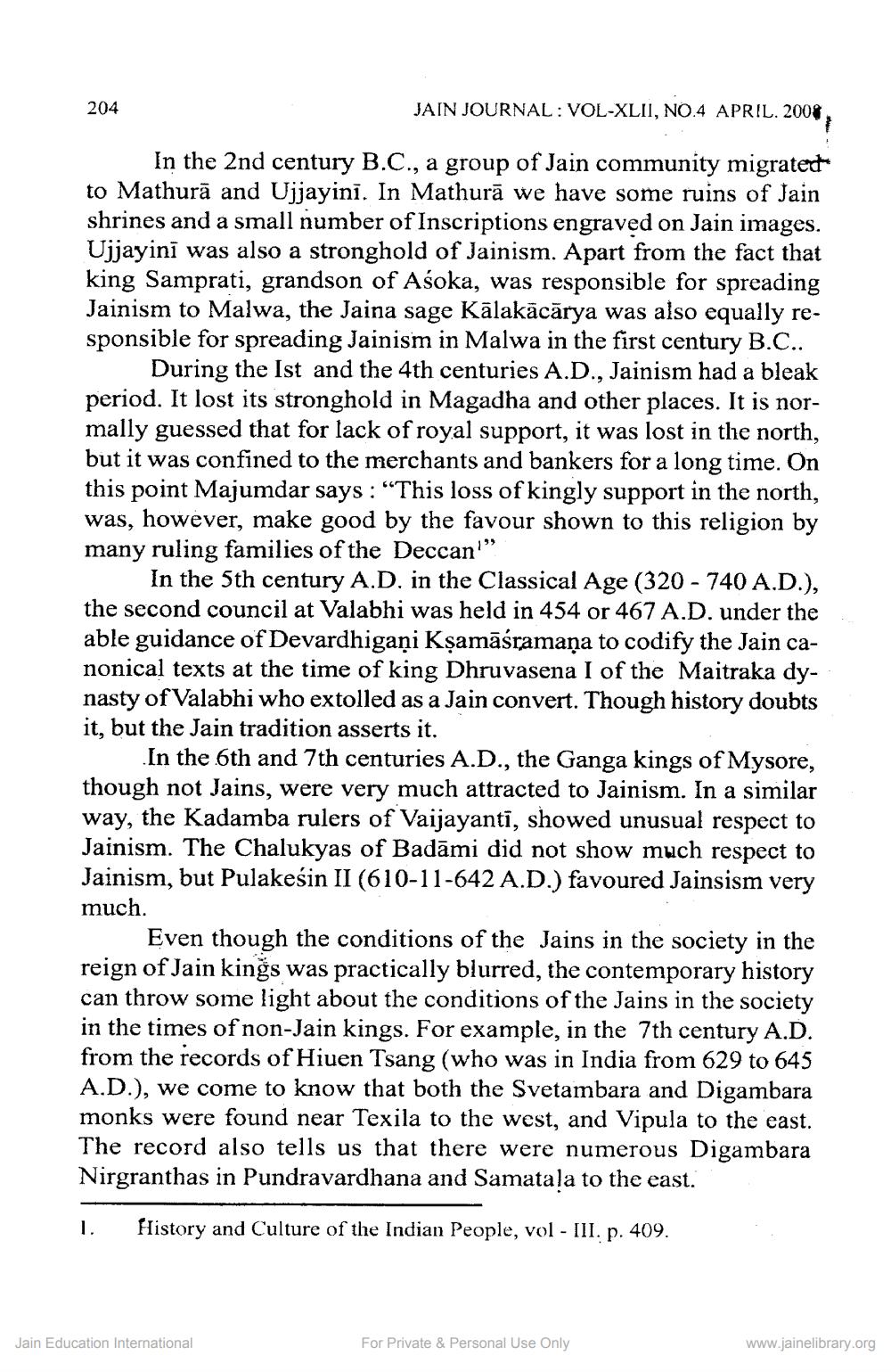________________
204
JAIN JOURNAL: VOL-XLII, NO.4 APRIL. 2008,
In the 2nd century B.C., a group of Jain community migrated to Mathurā and Ujjayini. In Mathurā we have some ruins of Jain shrines and a small number of Inscriptions engraved on Jain images. Ujjayini was also a stronghold of Jainism. Apart from the fact that king Samprati, grandson of Asoka, was responsible for spreading Jainism to Malwa, the Jaina sage Kālakācārya was also equally responsible for spreading Jainism in Malwa in the first century B.C..
During the Ist and the 4th centuries A.D., Jainism had a bleak period. It lost its stronghold in Magadha and other places. It is normally guessed that for lack of royal support, it was lost in the north, but it was confined to the merchants and bankers for a long time. On this point Majumdar says : “This loss of kingly support in the north, was, however, make good by the favour shown to this religion by many ruling families of the Deccan!”
In the 5th century A.D. in the Classical Age (320 - 740 A.D.), the second council at Valabhi was held in 454 or 467 A.D. under the able guidance of Devardhigaại Kșamāśramaņa to codify the Jain canonical texts at the time of king Dhruvasena I of the Maitraka dynasty of Valabhi who extolled as a Jain convert. Though history doubts it, but the Jain tradition asserts it.
In the 6th and 7th centuries A.D., the Ganga kings of Mysore, though not Jains, were very much attracted to Jainism. In a similar way, the Kadamba rulers of Vaijayantī, showed unusual respect to Jainism. The Chalukyas of Badāmi did not show much respect to Jainism, but Pulakesin II (610-11-642 A.D.) favoured Jainsism very much.
Even though the conditions of the Jains in the society in the reign of Jain kings was practically blurred, the contemporary history can throw some light about the conditions of the Jains in the society in the times of non-Jain kings. For example, in the 7th century A.D. from the records of Hiuen Tsang (who was in India from 629 to 645 A.D.), we come to know that both the Svetambara and Digambara monks were found near Texila to the west, and Vipula to the east. The record also tells us that there were numerous Digambara Nirgranthas in Pundravardhana and Samatala to the east.
1.
History and Culture of the Indian People, vol - III. p. 409.
Jain Education International
For Private & Personal Use Only
www.jainelibrary.org




